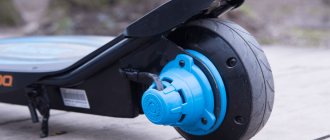Sickle purpose
Initially, the sickle was a tool without which not a single grain harvest, that is, harvesting grain crops, could be done.
That’s why it has another, but less common name – a reaping knife.
In the modern world, the sickle has taken its place among flower growers, livestock breeders, and summer residents.
Some farms still harvest with these hand tools.
But most often, this tool is used to remove weeds between rows in the garden, in the yard, and in places where it is difficult to reach with a trimmer.
They also use a sickle to harvest fresh fodder grass for domestic animals, cut dry vegetation around trees in the garden, near the fence, in places where it is impossible to work with a scythe or lawn mower.
With this tool you can trim young shoots, cut plants at the root, for example: green onions or garlic.
Classification
Such a long period of development of the instrument could not but affect its appearance and structure. Modern sickles can be classified according to a number of characteristics.
By type of handle
According to the sales results, sickles with a handle 11 cm long and 3 cm in diameter are absolutely in the lead. Handles are available in wood or plastic. A wooden handle is preferable: it does not slip or turn in the hand, is not “afraid” of sunlight and does not break when the tool is dropped. A handle that has dried out over time can be fixed by soaking the tool in water.
By shape
The length of the cutting edge of sickles varies from 25 cm to 50 cm. Accordingly, the width also changes - from 4 to 6 cm. The most commonly used are medium-sized tools - up to 35 cm in length and about 200 g in weight.
Based on the shape of the blade, all modern sickles are divided into three groups.
- The herbal sickle, designed for harvesting grass, has a smooth, serrated semicircular blade 4 cm wide.
- The classic sickle with a tapered end and a serrated blade was intended for harvesting grain crops. This form remains the most popular to this day.
- The reinforced sickle has a classic shape, but is distinguished by greater thickness and overall mass. This is a universal tool, the range of uses of which extends from harvesting to cutting off bushes.
Design, characteristics and principle of operation
The classic sickle has a simple design, consisting of a rounded metal blade, tapering towards the end, and a wooden handle.
The cutting part of the tool is located along the inner radius.
This crescent-shaped shape allows you to grab the stems and then cut them.
This work is done with one hand, and the plant being cut is held with the other.
The inner part of the sickle blade, that is, its cutting edge, can be made in the form of a sharpened blade, which is more suitable for cutting succulent herbs, or it can have serrations with a certain pitch and slope.
Serrated models easily cut tufts of dry, woody grass in one motion, like a saw.
Material
The working part can be made of ordinary steel with or without heat treatment.
A hardened tool can easily withstand heavy loads, is more reliable and generally more durable.
Stainless steel is also used in the production of this tool.
The handle of the instrument is most often made of wood, less often of plastic.
The latter has serious disadvantages, such as gradual destruction and cracking in direct sunlight.
In addition, plastic handles, especially cylindrical ones, become slippery in rainy weather or from sweat.
Dimensions and weight
The length of the cutting part of a classic sickle is usually in the range of 250 - 500 mm, the width is approximately 40 - 60 mm.
A medium-sized tool weighs about 0.2 - 0.3 kg, and the bending radius of its blade is about 150 mm.
Types of sickles, their prices
Most gardeners and gardeners do not know what types of sickles there are, mistakenly believing that there is only one type.
At the same time, non-standard models of this instrument have long been produced, which have a number of advantages over the classic version.
Based on the shape of the blade, these modern tools can be classified into the following groups:
Herbal sickle
A tool with a semicircular blade without teeth, 40 mm wide, used for harvesting fresh grass.
Its price is on average 200 - 300 rubles.
Classic sickle
Effective when harvesting grain crops.
Has the most popular form.
These models have a serrated blade that gradually tapers towards the end.
A model with notches will cost the buyer 300–600 rubles.
Reinforced
A heavier tool with a thicker blade.
It is considered universal, as it allows you to effectively cut the shoots of bushes and harvest grain crops.
The cheapest models will cost 70–100 rubles.
Reaper Sickle
It has a slightly elongated blade, designed for harvesting cultivated plants in small areas.
The cost of the tool is from 350 rubles.
Chinese
Among gardeners and summer residents, Chinese steel tools are popular, the handle of which reaches a length of 360 mm, while the length of the blade can be up to 195 mm.
This small garden sickle looks like half a crescent moon, is effective when working in tight spaces, and is good for removing established weeds.
Folding
Non-standard versions include a folding tool with a blade resembling a scythe.
This is a multi-functional portable sickle featuring a slightly curved smooth carbon steel blade measuring 230mm long and 40mm wide, equipped with a 500mm metal handle with a diameter of 22mm.
In essence, this is a mini-scythe, which is more reminiscent of a pink salmon scythe; it is safe for storage and transportation, since, if necessary, it folds in half with the cutting part to the handle.
When ordering through an online store it will cost 200 – 300 rubles.
Combat
They also produce combat models, which are initially melee weapons and are not intended for agricultural work.
Such sickles are made from more durable and expensive materials, in particular the blade is necessarily hardened.
Manufacturers offer a large number of sickle-shaped cutting tools, with handles of different shapes, different sizes and with different profiles of the working part, including L-shaped options, so that the buyer has a really wide choice of models.
How to sharpen a sickle at home?
If necessary, the teeth are notched manually. The sickle is first sharpened on a mechanical sharpener (with water). Then, on the non-chamfered side, teeth are cut with a chisel. This work is performed by two craftsmen. With uniform blows of a hammer, nicks are made with a chisel at an angle of 45-55° to the edge of the blade so that the tip of the cutting edge cuts through. At the same time, make sure that the distance between the notches is the same everywhere. The teeth on the blade are shaped like spatulas.
The sickle is one of the oldest agricultural tools. It is a kind of knife with a reverse bend; it has been used since ancient times for harvesting cereals and preparing feed for livestock. The antiquity of the tool is also confirmed by indirect data, for example, a comparison of the shape of the moon in some phases with the shape of this tool.
How to choose a sickle?
Considering that a classic sickle is a dangerous tool, especially in inept hands, the main thing you should focus on when purchasing is ergonomics.
Moreover, it is advisable to base it on your own subjective sensations, which can be obtained by holding several different models in your hands.
If this is not possible, for example, when purchasing from an online store, then you can only rely on the reviews of those who already own this tool.
Based on research and experience in the field of ergonomics, the optimal length for a sickle with a smooth blade is 330 mm, weight 0.2 kg, blade bending radius 150 mm and concavity 50 mm.
As for jagged specimens, with the same dimensions, the angle of inclination of the teeth (towards the handle) is 60 degrees, and the distance between adjacent teeth is 2 mm.
Speaking of the handle, the options with a diameter of 30 mm and a length of 110 mm provide the greatest ease of use.
People came to the above parameters experimentally back in the days when serious research was carried out on energy costs and labor productivity when harvesting with a sickle, which, by the way, is about 110 - 165 sq.m per hour.
INTERESTING:
The speed of bending work is noticeably higher compared to squatting work, although it is approximately 18 - 20% more labor intensive.
Working with a semicircular sickle requires some skill, but the Chinese mini-braid discussed earlier does not have this drawback.
According to numerous reviews, it has proven itself to be excellent due to its ease of use, high speed of operation and relative safety, however, due to the lack of teeth on the cutting part, it is not suitable for cutting dry plants.
On the other hand, this option is effective when working with low-growing plants.
What does a sickle consist of?
This tool consists of a curved knife with a handle (Fig. 1), but the shape of the cutting part is determined by the need to ensure equal force at any point on the blade that occurs during cutting.
Fig.1. Sickle: 1 - sickle knife; 2 - handle
In turn, the constancy of forces at any point of the cutting edge is ensured by the constancy of the angle, and at any point of the knife blade (angle a - the angle between a straight line drawn from point O, located on the axis of symmetry of the handle, to any point of the knife blade, and the tangent at this point to the curve of the blade).
Long-term practice of using sickles has shown that the angle a=51° is optimal. A notch 0.4 mm deep is made on the cutting edge of the blade (Fig. 2), as a result of which the knife blade consists of teeth. The notch is made either perpendicular to the edge of the blade (type 1), or at an acute angle to it (type 2).
Fig.2 . Varieties of the cutting edge of the sickle: 1 - blade of the knife; 2 - chamfer; 3 - teeth
The most common are sickles with type 2 notches.
What you need to know about sickles?
A sickle is a simple tool, but it also needs proper care and storage.
Working in wet conditions or with succulent live plants can lead to corrosion, especially when particles of soil or grass stick to the metal and remain there for a long time.
At the end of using the tool, you should carefully wipe its working part with a rag, or use a bunch of mowed grass.
When storing an instrument, an important condition is that it dry quickly after contact with plant juices or moisture, and therefore it is recommended to hang it, for example, on a wall.
How to use a sickle?
The instrument got its curved shape for a reason.
With a blade made in the shape of a crescent, it is more convenient not even to cut the plants, but to grab the stems, which will then be cut.
The work process itself is divided into the following stages:
- Using the pointed end of the blade, we separate a certain amount of stems from the total mass.
- We grab a bunch of separated stems approximately in the middle of their height with our left hand, so that the thumb is at the top.
- Using a smooth movement of the sickle towards you, we cut a bunch of plants collected in your hand, at a height of about 5-10 cm from the ground.
Weeds can be cut lower because they do not need to be cleared of soil, dried, etc.
NOTE:
By avoiding jerking of the blade during operation, you can significantly reduce the energy consumption of the process, especially since sudden movements do not speed up the process in any way, and also increase its risk of injury.
Unlike a trimmer, which makes mowing grass much easier, plant stems do not fly away in different directions, but remain in your hand after cutting.
This allows them to either be carefully placed on the ground or placed directly in a garden basket or wheelbarrow.
Important!
All operations with a sickle, be it cutting a single weed or harvesting a large amount of fodder grass, should be performed only in a comfortable, stable position of the body, and so that the blade is visible and its position is known at every moment of time.
As already mentioned, without experience, a worker is able, first of all, to inflict a serious cut or stab wound on himself.
Attention!
When picking up a sickle for the first time, you should not chase the speed of work; first of all, focus your attention on your own safety.
How to sharpen a sickle?
You already know that the sickle comes with a flat blade and with serrated blades; the sharpening of different blades has some differences.
Sharpening flat blades
Flat blades require much more maintenance, and it is recommended to sharpen them properly before each large-scale job.
Sharpening is carried out depending on the level of dullness of the blade.
In case of great dullness, the sharp edge of the tool blade is first beaten off by gentle tapping, this process is called riveting, it is carried out using an anvil and a hammer, like a scythe.
The tool must be placed on the anvil, and with a light hammer, tap the edge of the blade, holding the plane in a horizontal position.
NOTE:
This procedure is carried out with models made of mild steel.
Riveting must be done very carefully along the entire length of the blade.
This process requires certain skills and experience.
The final sharpening, and in cases of slight dullness of the blade, is carried out using a hand-held whetstone (fine-grained whetstone).
You need to press the sickle with the handle to your chest, turning the blade away from you, and make short movements along the blade with a sharpener along the very edge.
During the sharpening process, the blade is gradually advanced from the base to the very end.
Sharpening serrated blades
If the teeth on the blade remain sufficiently large, then sharpening should be done in the same way as a blade without teeth, but without riveting.
Important!
Serrated blades are sharpened only on one side where there are no teeth.
When the teeth become very dull, they should be completely ground off and new notches applied with a chisel.
This procedure is very painstaking and is carried out by two people, where one holds the sickle and, if necessary, advances it, and the other makes the notch using a chisel and hammer.
NOTE:
In modern conditions, the process of sharpening a sickle is so labor-intensive that it is much easier and more profitable to purchase a new tool rather than waste your time and energy on sharpening it.
How to use a sickle?
When reaping, the reaper holds a sickle in his right hand, uses it to separate part of the stems from the main mass, squeezes this part of the stems with his left hand and cuts them off with a quick movement of the sickle. At the same time, to compress one bunch of stems, the reaper makes three swings with a sickle.
He separates the compressed stems from the standing ones by raising his left hand up and places the stems on the prepared sheaf. Cutting occurs with sliding. In this case, the sliding of the sickle relative to the stems is greater, the smaller the height of the teeth on the blade of the blade. Therefore, the effort required to cut a bundle of straw is less.
The cutting process with a sickle is similar to the sawing process. The shallower the depth of the notch, the easier it is to work with the sickle. If the cut is too deep, the cutting force increases, and the reaper, as they said, jerks his hand. But the service life of a sickle with deeper notches from one serration process to another is much longer, since as the cutting edge wears out, the sharpness of the blade (with teeth on it) can be restored by sharpening the blade from the smooth, non-serrated side of the blade using a sharpener (with water ).











